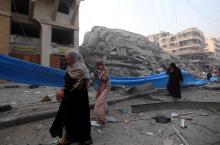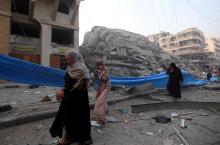Following the 7 October 2023 horrific attack by Hamas on Israel and the ensuing intense bombardment on Gaza by Israel, UN Women has worked to analyze the differentiated impact on women, men, boys, and girls, to ensure adequate responses to their needs.
Facts and figures: Women and girls during the war in Gaza
UN Women calls for an immediate humanitarian ceasefire and for the establishment of a humanitarian access to facilitate the immediate entry of humanitarian assistance including food, water, fuel, and health supplies for women and girls in the Gaza Strip.
Even prior to the present crisis, the situation in Gaza was dire, with 97 per cent of men and 98 per cent of women in Gaza fearing for their safety.
The data below, consisting of estimated figures and updated as of 20 October, shows how women and girls in Gaza have endured attacks and displacement, as well as social and economic disruptions, since 7 October. Read the full Rapid Assessment and Humanitarian Response report for further data, source information, and to learn about UN Women’s response to the crisis.
Women living in Gaza have unique and urgent needs and vulnerabilities, both relating to the current conflict and due to structural gender discrimination, including laws in Palestine which assume women to be under the protection and guardianship of men. Such structures increase women’s risks to gender-based violence and food insecurity, and make them more likely than men to be living in sub-standard temporary shelters when displaced.
UN Women has been supporting Palestinian women since 1997 to achieve their social, economic, and political rights.

